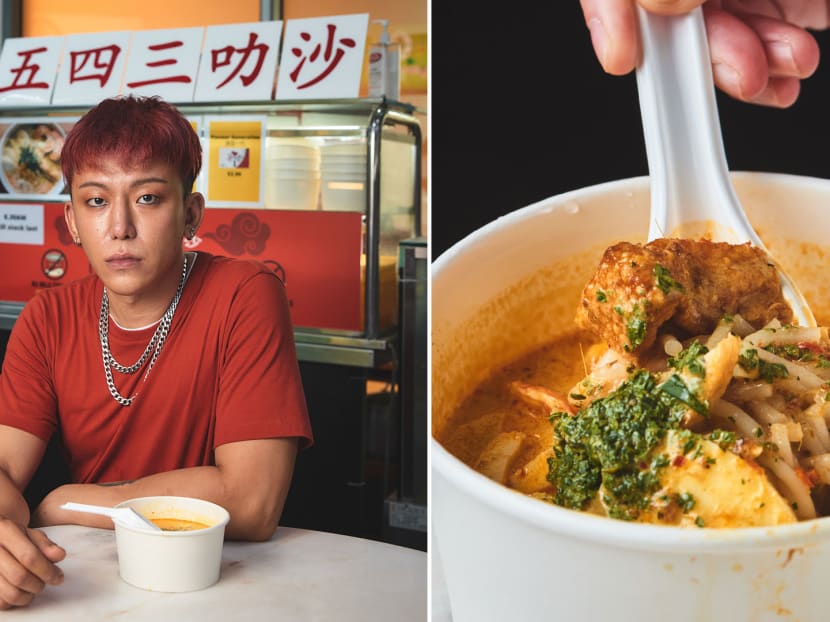Undertaker’s Apprentice Turned Hawker Sells Laksa At Hipster Stall In Bukit Panjang
His laksa, made in a limited batch of about 75 bowls a day, sells out in under three hours.
Most F&B owners hope to sell as much food as possible, but new hawker Thian Le Yong, 29, dissuades his first-time customers from ordering multiple bowls of his laksa. “I tell them honestly to buy one bowl first to try before they buy more,” he chirps. His menu has precisely one dish, laksa, which he cooks from scratch with homemade rempah and prawn stock.
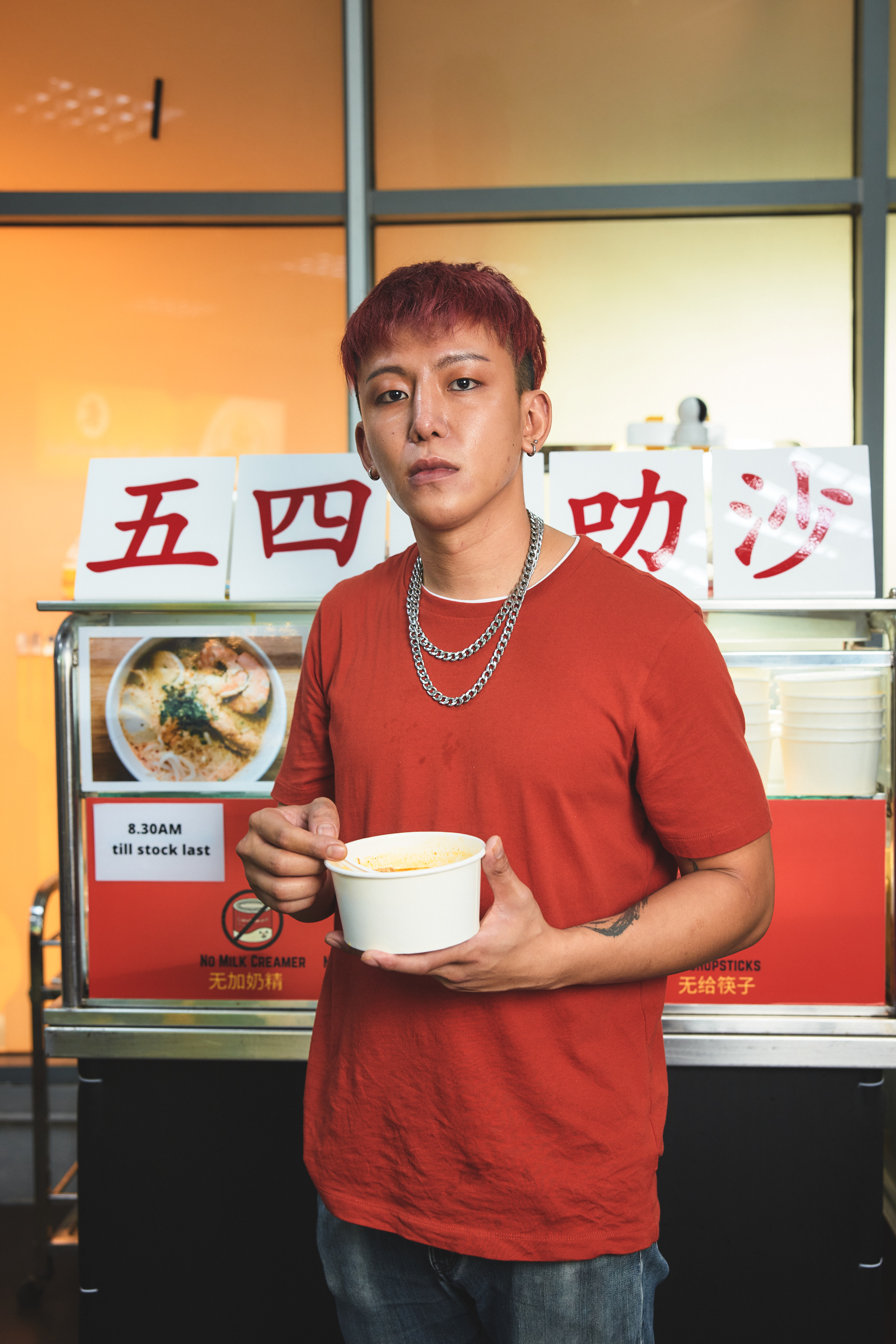
543 is not a gang slogan hor
He started his hawker stall 543 Laksa just earlier this month, after operating as a home-based business out of his Bukit Panjang flat, where he lives with his parents. The new stall is located at a tiny, obscure coffeeshop called Xiang Kao Cafe within Senja-Cashew Community Club, a short walk from his block. “543 is my block number,” Le Yong explains of his shop’s name.
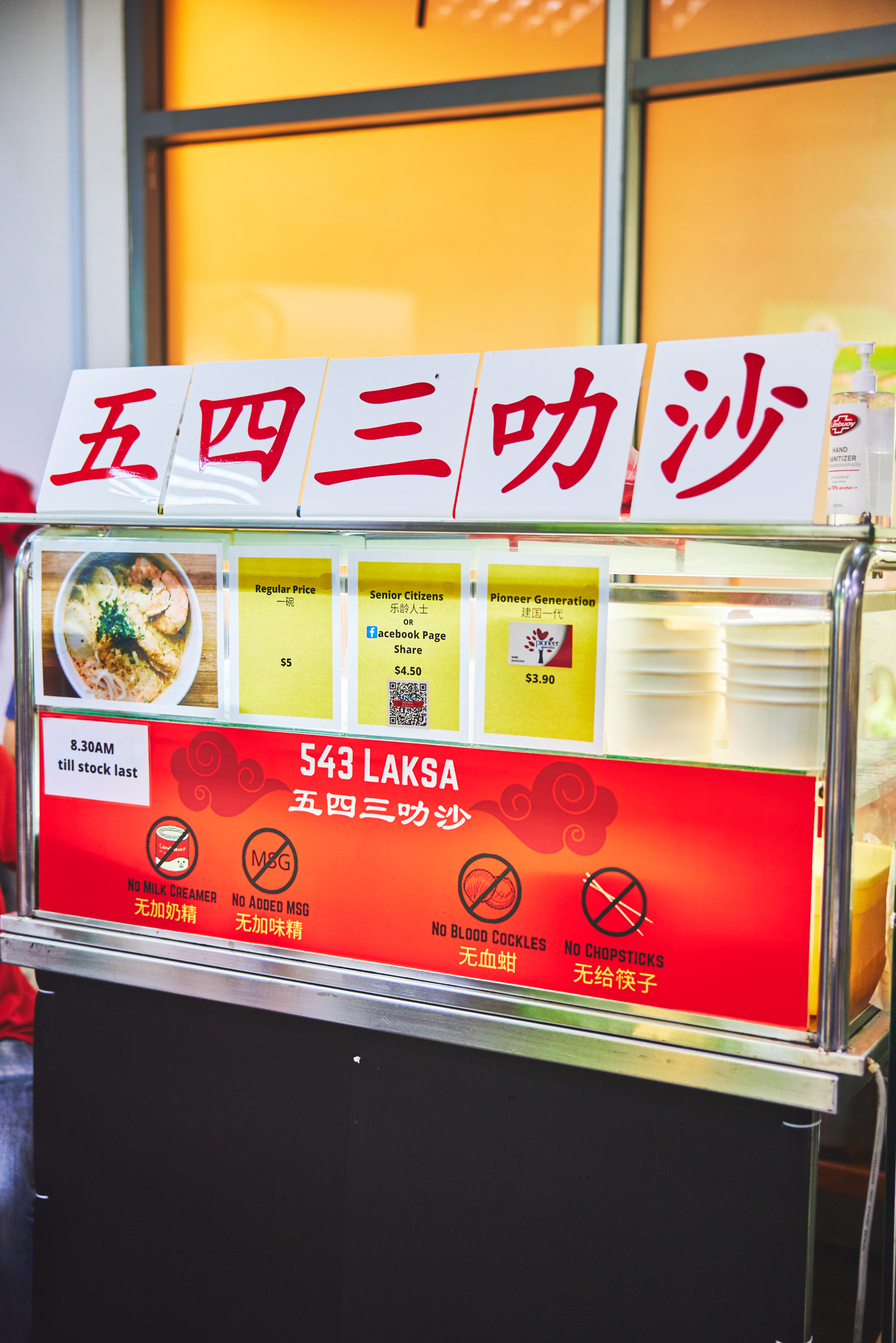
Hipster laksa stall
At first glance, 543 Laksa looks fabulously gritty. Stashed in a corner of the kopitiam, it has no kitchen equipment except for a glass display case (which Le Yong uses as storage space), a steel counter and two portable electric stoves. The laksa is served in plain white paper bowls, which Le Yong hands to his customers while murmuring “laksa lai, laksa lai.”
There’s no fancy signboard either, save for five red-and-white plastic placards that spell out “543 Laksa'' in Chinese. We almost expect 15 director Royston Tan to pop out from behind the glass case. As it turns out, none of this hipster grittiness is deliberate. Well, except for Le Yong’s glam getup of silver chain necklaces, dyed pink hair and eye make-up, which he says he dons every day at the stall. “But I usually wear shorts lah, ’cos it’s hot,” he laughs.
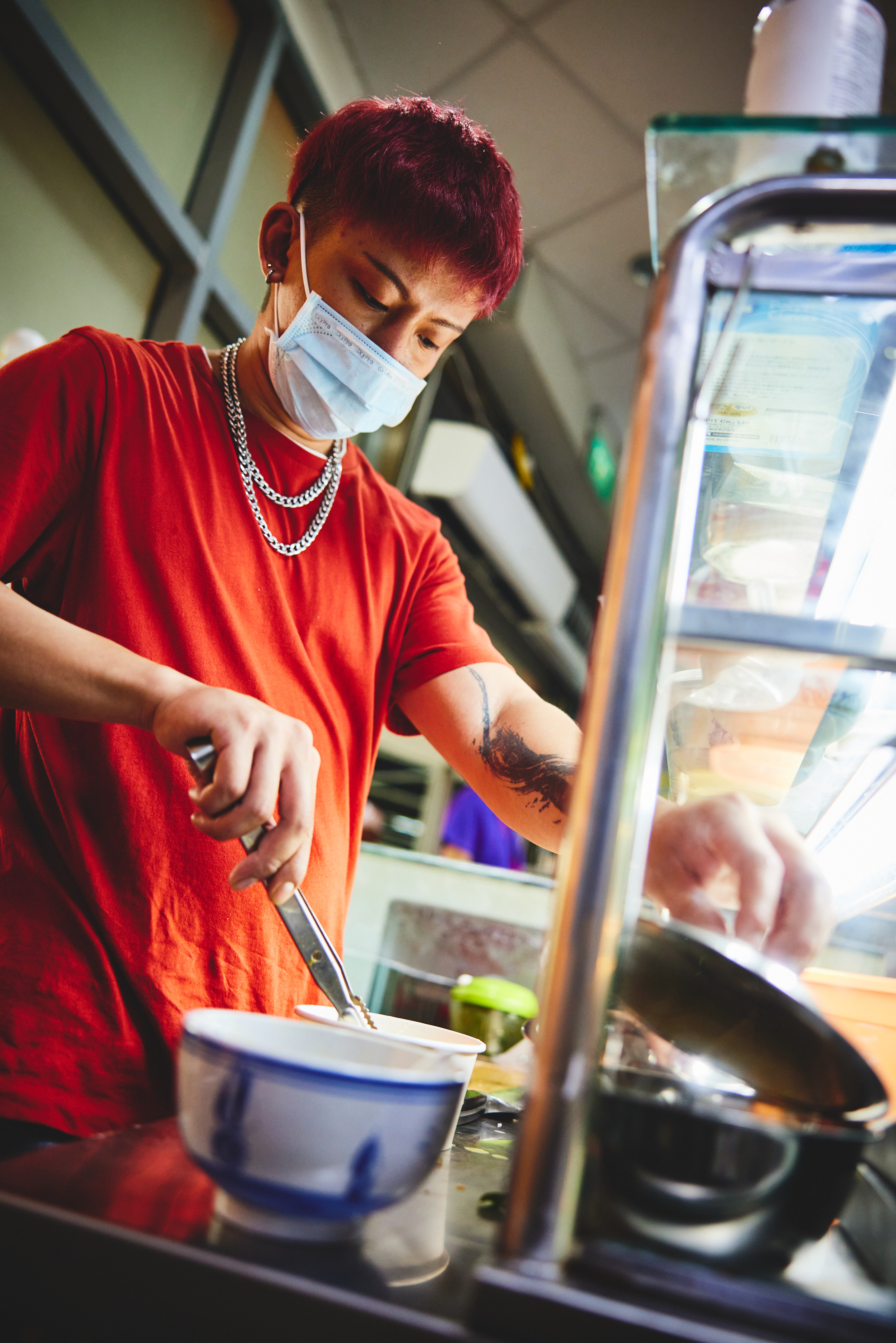
No cooking here
According to Le Yong, his unit used to be a rojak and popiah joint before he took over. He recalls, “My dad is always [at this coffeeshop] and he got to know that the auntie selling rojak didn’t want to do it anymore.”
Due to operational restrictions, the stall’s hawkers are prohibited from keeping raw meat or cooking with an open fire there. While it wasn’t much of a problem for a rojak seller, it presented additional challenges for Le Yong, who also had to close his stall for a few days at the start of March after coming down with Covid-19.
He now prepares his laksa gravy and ingredients like prawns and hard-boiled eggs at home before bringing them over to his stall to heat up and serve. “I want a proper shop,” he muses. “But I like this stall. It’s small and quite cute to me (laughs).”
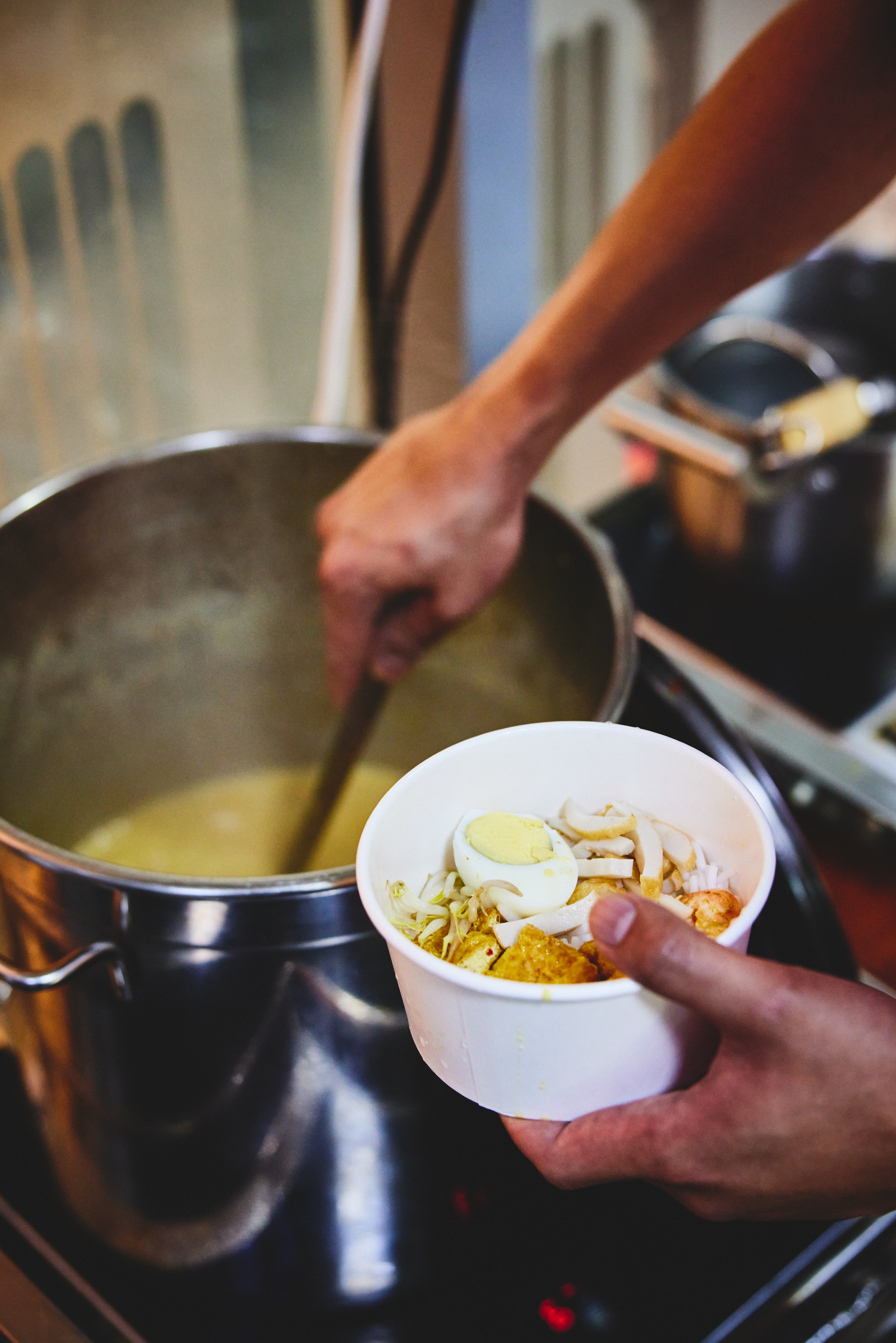
The laksa
543’s laksa is served Katong-style, which means you use a spoon - instead of chopsticks - to scoop up the thick beehoon that has been cut into short strands. A bright red sign at the stall proclaims: “No chopsticks, no milk creamer, no MSG, no blood cockles” (you can only blame the stall’s no raw proteins restriction for the latter).
There’s just one size for the laksa, which is priced at $5 ($4.50 for senior citizens and folks who post about the laksa on Facebook, and $3.90 for Pioneer Generation cardholders). Incidentally, Le Yong's pricing model is also 543. “I only start to earn a profit at $4.50 a bowl,” he says.
He has been feeling the heat of rising food costs for ingredients like coconut milk (he insists on not using any creamer, a lower-priced substitute used to thicken laksa gravy). “I cook my own prawn head stock in the morning. Takes time and money as well. There are many ways to do things cheaper, but you won’t get the flavour you want,” he shrugs.
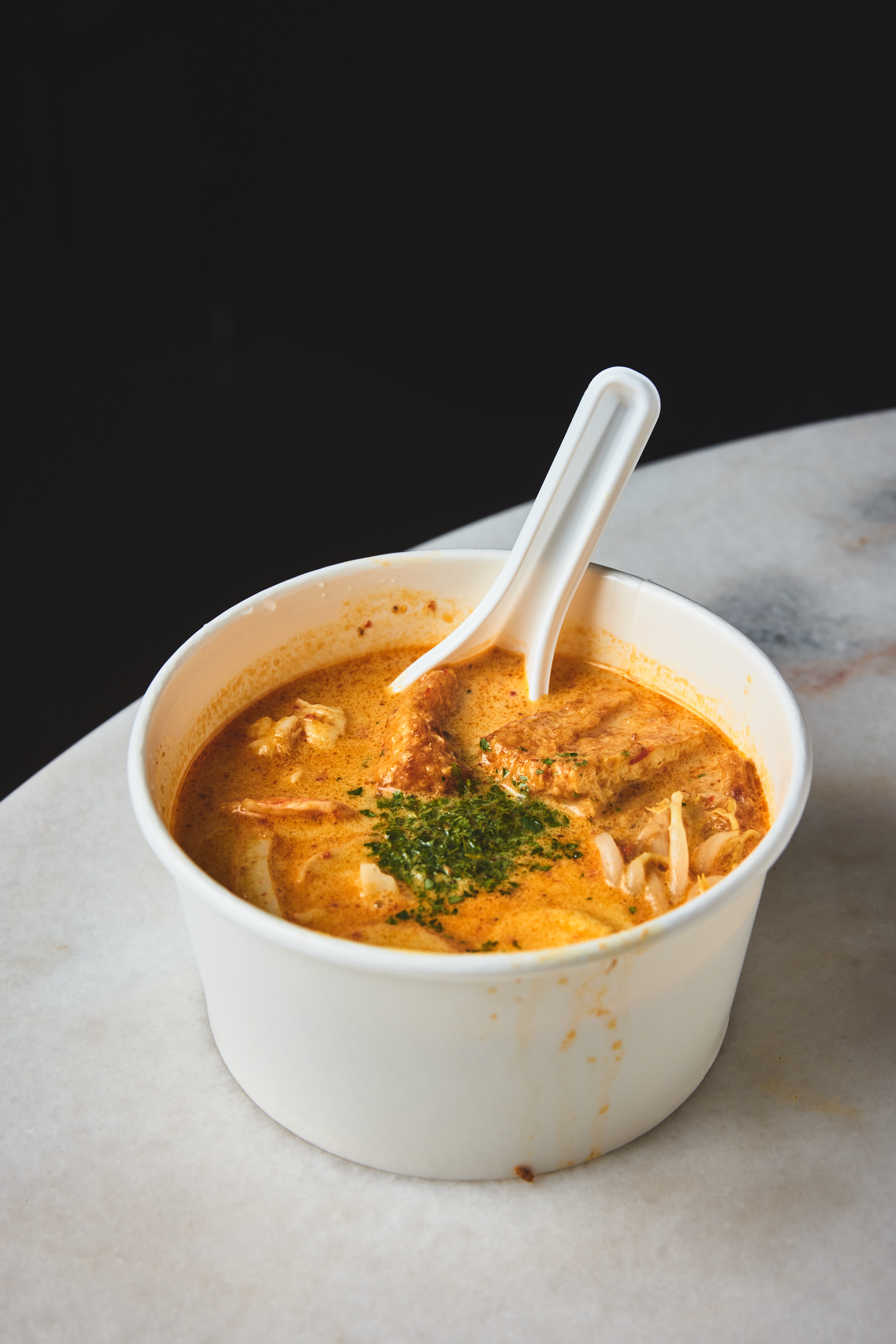
No chilli
But a controversial omission for Le Yong’s laksa is the requisite dollop of sambal. How can, we ask the millennial hawker, who opines: “I have received comments like ‘why no chilli, why no hum?’ But if the laksa is very spicy, you can’t really enjoy its complex flavours. Spiciness will always [overwhelm] a lot of flavours.”
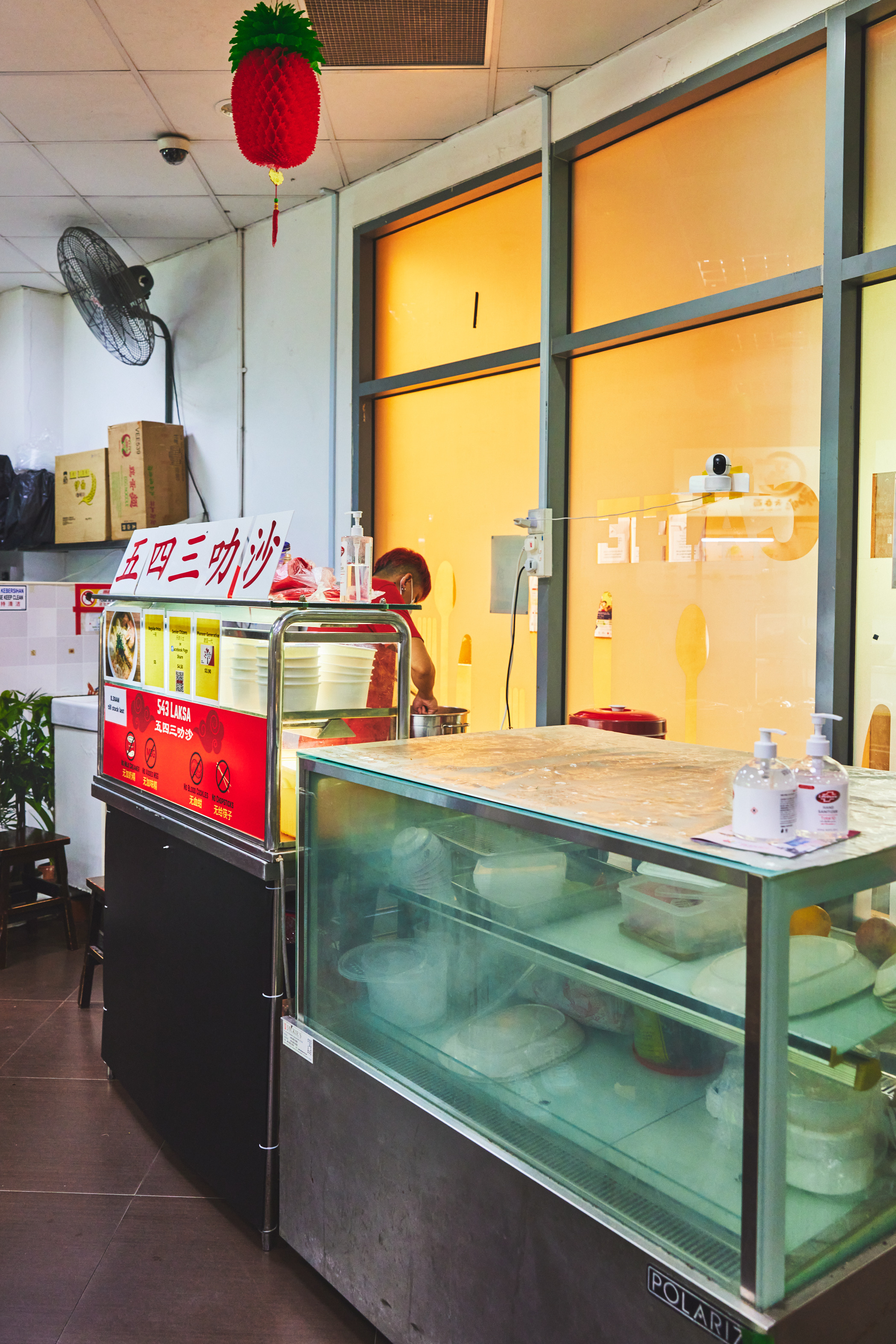
Sells out by 11am
Le Yong prepares an average of 50 to 75 bowls of laksa a day, an amount that he feels comfortable selling as a solo hawker. He opens his stall at 8.30am, and is usually sold out by 11am. “I stop when the soup [in the pot] is getting low,” he says. “And if I think the quality of my soup sucks, I will just close my stall [for the day].”
The candid self-taught cook admits that he’s not always on form. He notes that his gravy on the day of our visit is “not so good” (but more on that later). When he first started out, he also made rookie mistakes like ruining his gravy by topping it up with water. “I closed the stall and poured away all the soup. I went home so sad,” he recounts. “But I believe through experience I can make it better.”

On becoming a hawker
Le Yong has “job-hopped a lot”, but found stability in being his own boss at a hawker stall. “As a hawker your life is structured; I dislike complications in my life,” he says, adding that he had once worked as a hawker assistant at a wanton mee stall and enjoyed the experience. “It was very fun, I like interaction and I got to talk to people.”
He has a diploma in micro and nanotechnology from Republic Polytechnic, though he chortles that he has “done nothing related to my diploma” as he realised the subject wasn’t for him. Le Yong recalls: “Nanotechnology sounded cool leh. Then I spent three years learning to make something I couldn’t see.”
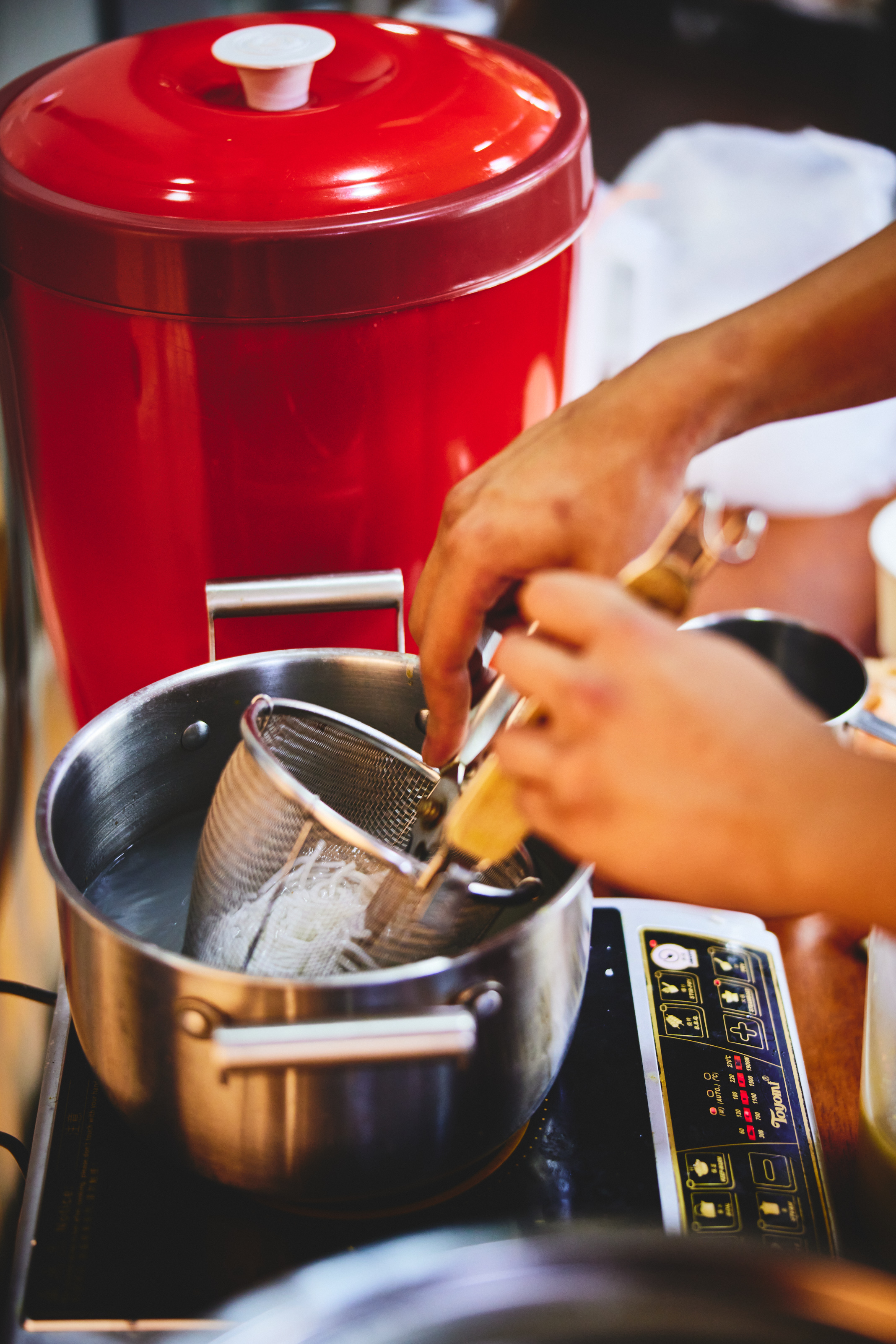
The undertaker’s apprentice
In his quest to “find peace in myself”, the “experimental” youth – who struggles with anxiety and depression – also apprenticed with an undertaker to learn about the intricacies of life and death. Part of the then-24-year-old's job scope was to carry bodies and coffins. “It comes with a lot of emotions, a lot of discomfort. I was nervous about dropping the body or coffin. But after that you feel honoured to have sent someone off for the end part of their life,” he says.
He also had to oversee suicide victims. “It was very emotional. When you watch dramas and see parents crying over the body of their child who [committed suicide] and saying “why are you so silly?” — it’s real. It’s real. Some days I couldn’t handle myself. I wanted to cry too,” he reveals.
Le Yong left his apprenticeship early. He recounts, “I felt very heavy. I decided I didn’t want to carry on like that.” To become a hawker, he attended “a short hawkerpreneurship course”, though he also has F&B experience working stints as a bartender and bistro-bar cook. Cooking laborious dishes like laksa, he reckons, is therapeutic. “When you concentrate on something, you don’t care how much time has passed. I used to cook a lot at home and give the food to my neighbours,” he shares.
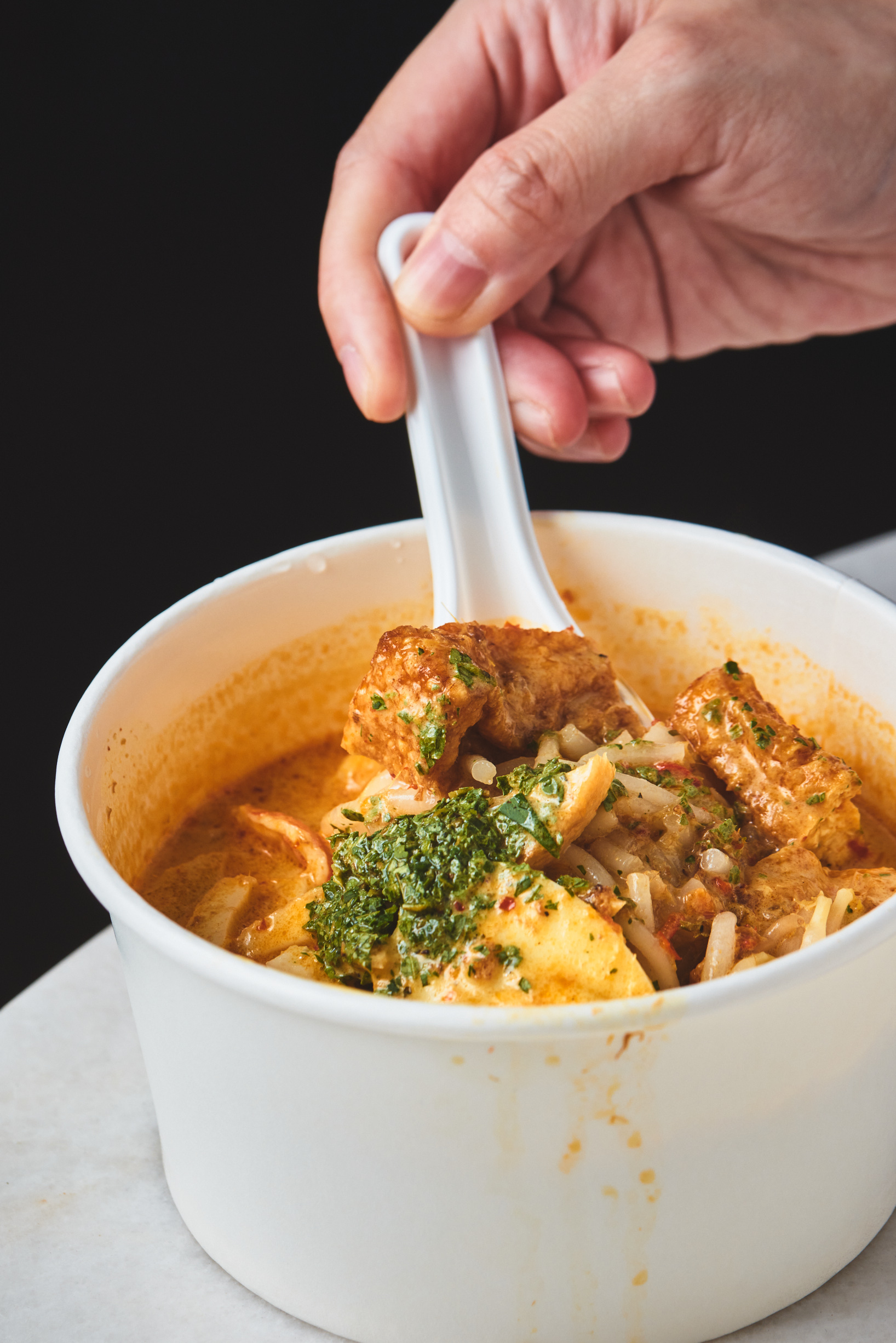
Laksa, $5
Each 543 Laksa bowl comes with prawns, tau pok, hard-boiled egg, crunchy beansprouts, slivers of fish cake and stubby, al-dente thick beehoon drenched in orange gravy. We could do with thicker slices of fish cake for better mouthfeel. The gravy – which Le Yong says is not his best pot – has a light consistency like the famed Depot Road Zhen Shan Mei Claypot Laksa at Alexandra Village Food Centre. If you prefer your laksa rich, gao and almost goopy, this is too watery.
But you should still expect a thinner-than-usual gravy here, as Le Yong wants to offer laksa that’s not too jelak and “can be eaten in the morning”. Wateriness aside, the flavour of his laksa is pretty good – punchy, moreish and aromatic. We finish our bowl of laksa without feeling like a puddle of grease. Despite being a newbie hawker with the occasional wonky moment, Le Yong already has a pool of regulars for his laksa. So go early if you want to try some.
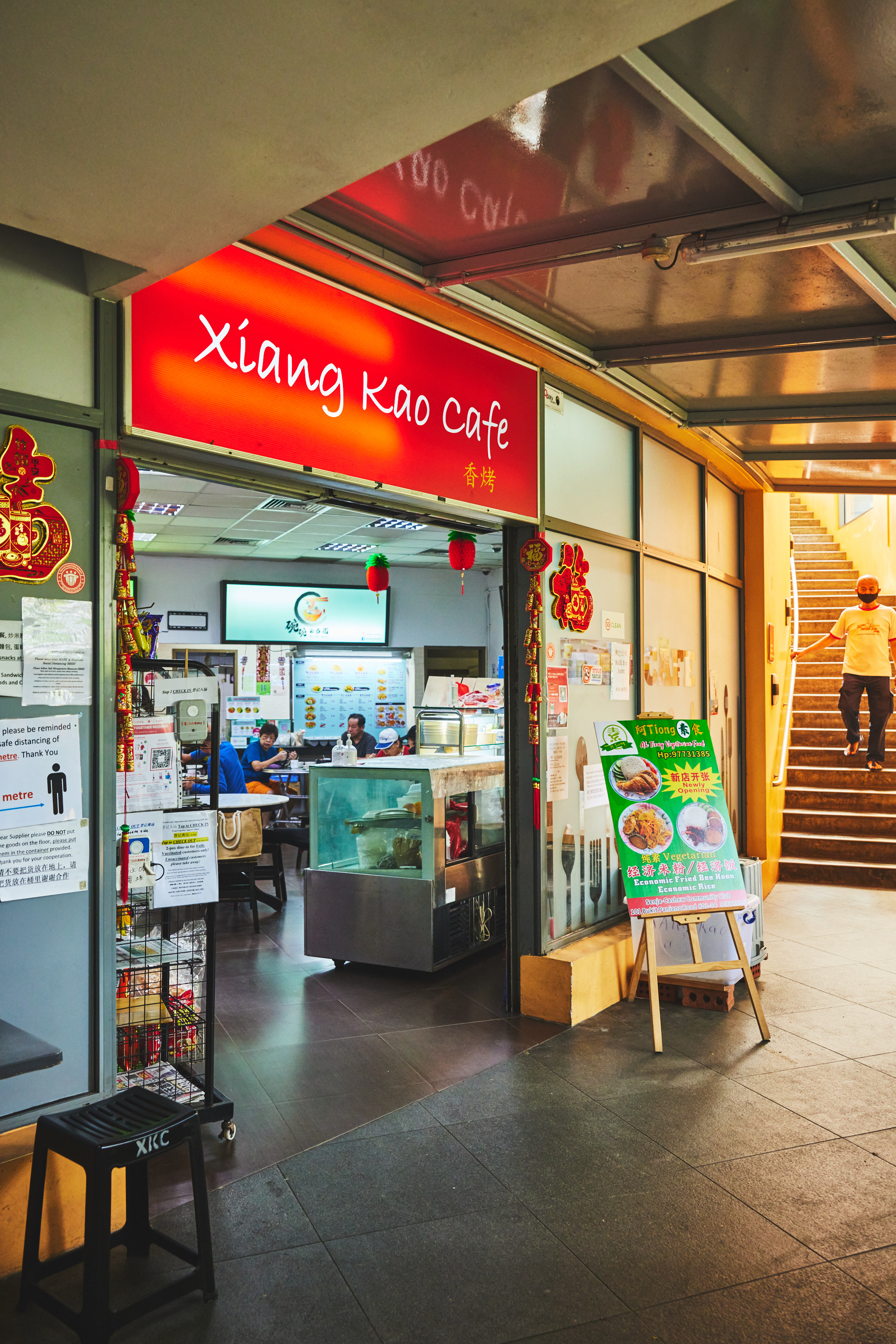
Address and opening hours
Address: Xiang Kao Cafe, Senja-Cashew CC, 101 Bukit Panjang Rd, Singapore 679910
Opening hours: 8.30am till stock runs out (usually around 11am)
Facebook, Instagram
Photos: Alvin Teo

